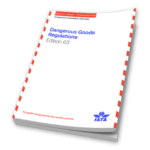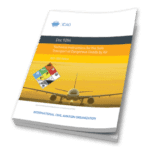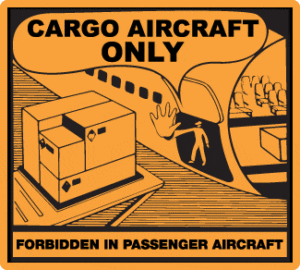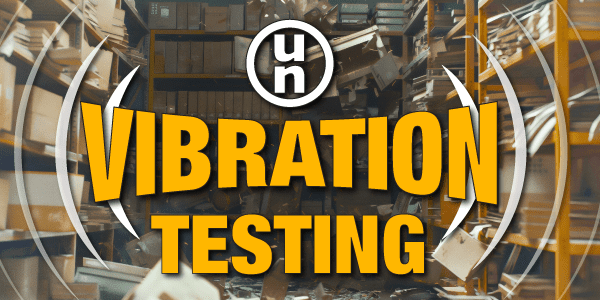As the sweetness of summer fades, little harbingers of fall have started to make their appearance. Evening draws in a little earlier each day. Coffee shops break out their pumpkin spice. And the International Air Transport Association (IATA) sends out word on what changes will be coming in the Dangerous Goods Regulations (DGR) for next year.
Yes, it’s time for us to look forward to IATA’s annual “Significant Changes and Amendments” publication. Just out is the list of changes to the 63rd edition for 2022. To be honest, except for one big bit of news, it’s not a big one. This is an off-year for the ICAO Technical Instructions for the Safe Transport of Dangerous Goods by Air, the international regulation on which the IATA DGR is based. Since the Technical Instructions are only published in odd-numbered years, there won’t be a new version next year. What, then, could IATA base their changes on? According to Dave Brennan of IATA, “things change faster than every two years.” Where IATA sees problems with the DGR creating inefficiencies in transport, or where the text is often misunderstood, IATA will change things even in a year when ICAO has not published any changes.
So what will we see for 2022? One change is in the interpretation of how State Variations (extra requirements held by various countries) work. A policy change appears to have been made, as IATA now states that “[t]he List (2.8.1) and List of State Variations (2.8.2) have been revised to include territories that are subject to the jurisdiction of a State where that State has advised of variations to the provisions of the DGR.” This can affect when a variation applies in regions that may not have direct sovereignty. For example, Guam is a territory of the United States, and this clarification would mean that US variations would apply there.
Changes have been made to DGR Section 10, to more effectively help shippers identify basic nuclide values for radionuclides not included in Table 10.3.A. In these cases, a statement must be included on the Shipper’s Declaration that Table 10.3.B has been used to determine the classification. And a new “Step 13” has been added to the procedures for completing the shipping document providing an example of this statement for the Shipper’s Declaration. The statement must include an indication of what type of radiation is emitted by the radionuclide in question.
The biggest area of change, as it often is, is with lithium batteries. The most significant alteration is for the shipment of low-powered lithium batteries as spares. These have been restricted more and more over the years, with “Section II” exempted batteries being very limited in the number of batteries per package (not more than eight cells or two batteries), and spare batteries as a whole being forbidden from passenger air transport. And even then, some major carriers such as UPS and Federal Express have banned spare batteries under Section II completely.
Apparently, the data which led to those carrier bans have been persuasive at the regulatory level because now ICAO has plans to eliminate the Section II option for 2023, and IATA has decided to jump ahead and do the same for 2022. However, there will be a three-month transition period, so spare batteries under Section II would be acceptable until April 1, 2022.
Keep in mind that this only applies to batteries without equipment (UN3090 and UN3480). Lithium batteries contained in equipment or packed with equipment (UN3091 and UN3481) are not affected by this change. They can still be shipped as Section II, with no mention of change.
As always, there are a few minor clarifications. For example, text has been included that Cargo Aircraft Only labels can be “obliterated” as well as “removed” when they are no longer necessary.
Of course, this only gives us one year’s respite before the bigger changes coming for 2023. To help shippers plan, IATA has included for 2022 a new Appendix I, which lists the planned changes for January 1, 2023, based on the anticipated revisions in the 2023-2024 ICAO Technical Instructions. These will include further changes to the details for shipping lithium batteries (of course!), revisions to classification procedures for corrosives, and some new packing instructions.
To obtain a copy of the summary of changes for IATA, go to click here and scroll down to the bottom of the page. Enter your e-mail into the “STAY UP-TO-DATE” box, and you’ll get a link to download the free document in Adobe Acrobat PDF format.
Do you have any questions shipping by air? Need help planning how to revise your shipping procedures? Contact us here at ICC Compliance Center, 1-888-442-9628 (U.S.) or 1-888-977-4834 (Canada), and ask for one of our regulatory specialists. We can step you through the changes and make sure you don’t get caught out!
Sources:
International Air Transport Association, Dangerous Goods Regulations
IATAtv, Why are IATA Dangerous Goods Regulations manuals updated every year?
IATAtv, The 2022 changes in the 63rd edition of the IATA DGR
Stay up to date and sign up for our newsletter!
We have all the products, services and training you need to ensure your staff is properly trained and informed.
 IATA Publications |
 ICAO Publications |
 Cargo Transport Only Labels |
 Shipping Dangerous Goods by Air Training Courses |







 ICC USA
ICC USA ICC Canada
ICC Canada